
This blog post is part of a series jotting through my trip to Israel in June 2019. For contents page for the posts see the Introductory Post. If I've reported something incorrectly, please let me know via post comments (below) or my contact page. All photographs are Copyright © James Oakley, June 2019, unless indicated otherwise.
Day 8 was a visit to Nazareth.
This showed how shocking my geography was, before visiting Israel in person to see how the country fits together. I'd always pictured Nazareth as being beside the Sea of Galilee. In fact, it took about 45 minutes to drive from one to the other. Now I know! (So "Can anything good come from Nazareth?", spoken by the lakeside, is not an anti-northern snobbishness, but a lake-dweller anti-hill-dweller snobbishness.)
First, we visited Nazareth Village, a reconstruction of life in the time of Jesus. Modern Nazareth is a large, sprawling town built on a steep hillside, so having finished at the village we had time to explore the town centre, find some lunch, and (if we wished), explore the two churches in the centre that are dedicated to Mary and Joseph respectively.
Here are some pictures from Nazareth Village

Winnowing fork, for throwing straw into the air to separate out the wheat from the chaff:

Threshing board, for trampling over grain to separate the kernels from the straw: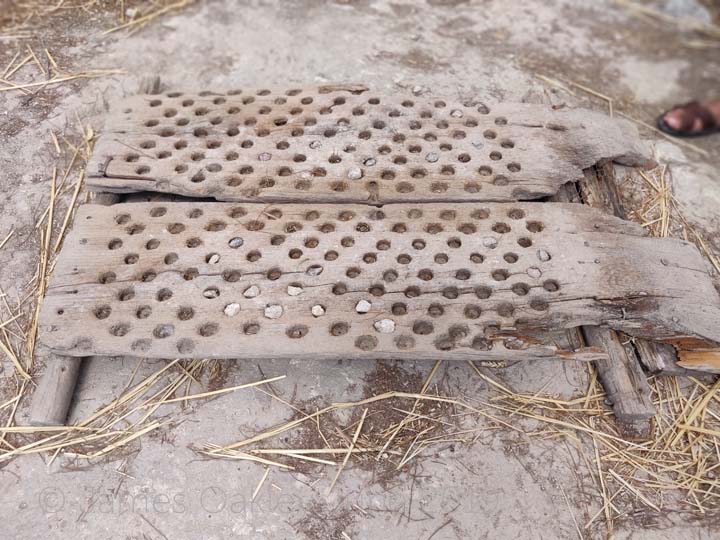
I am the gate of the sheep:

A wine press, where grapes would be trampled with bare feet to prevent crushing the bitter seeds:
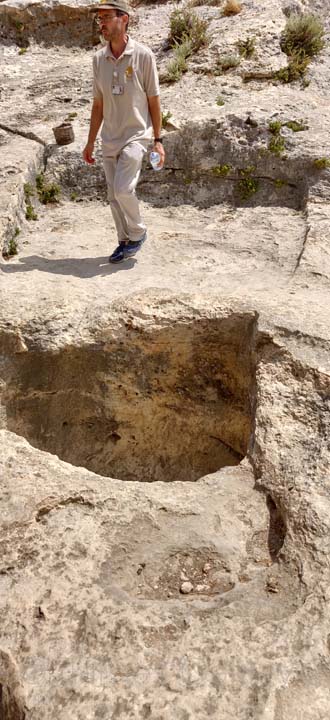
A closer view allows you to see how the juice would flow through a groove in the rock into the collection area. This winepress is original, and it is the groove that told those discovering it that it was for pressing grapes.
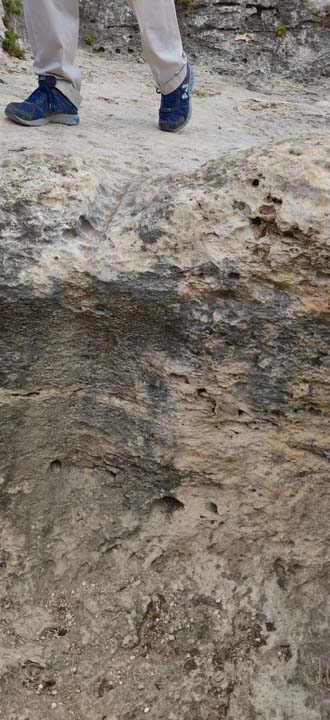
A man planted a vineyard, put a wall round it, dug a winepress in it, and also built a watchtower (Matthew 21:33). This watchtower was built here for the purposes of people looking around the village, but one of similar dimensions and construction was found (dating to the time of Jesus) in an adjacent parcel of land:

Olive press: Olives were placed in the stone container, and this heavy stone rolled round and round crushing the olive flesh, stone and skins.
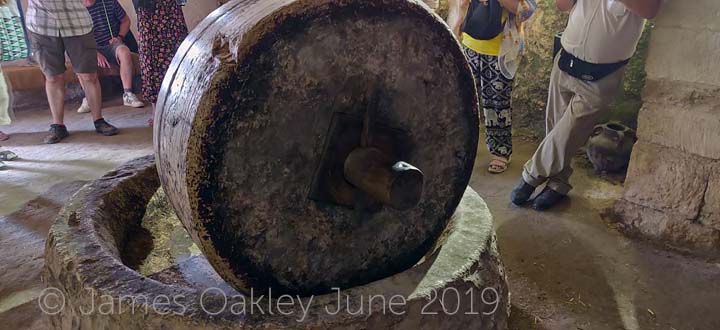
The pulp was placed in baskets before being pressed with a heavy level weighed down with stones.
We saw Hannah weaving wool into fabric. The wool was first died using various dies (onion for orange, greens and browns from grasses, etc) then pulled into strands, then spun, then left to rest and untangle, then woven.
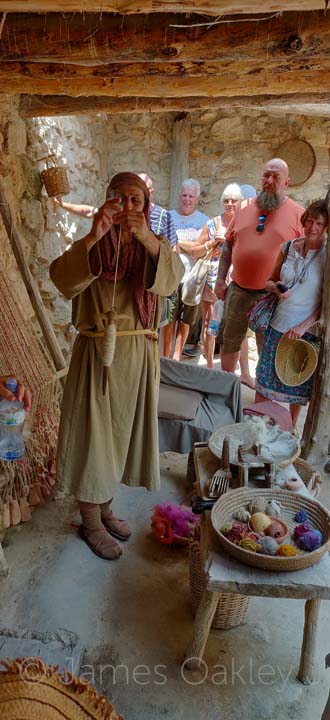
A synagogue of the style at the time of Jesus has been built in the village site:
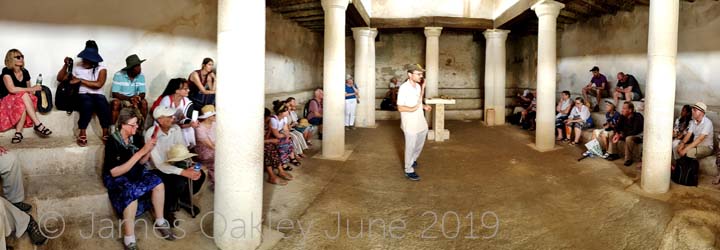 You can then picture the scene when Jesus read from the scroll of the prophet Isaiah:
You can then picture the scene when Jesus read from the scroll of the prophet Isaiah:

"Today, this Scripture is fulfilled in your hearing."
Recent comments